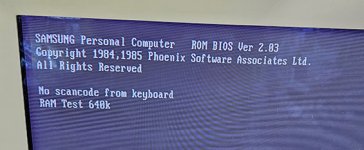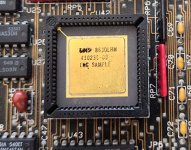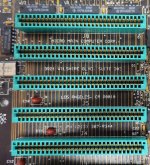Hinoserm
New Member
- Joined
- Dec 13, 2019
- Messages
- 9
Hi,
I'm hoping someone can tell me more about this weird motherboard that I'm guessing was some kind of prototype. It has a 286 CPU but wants an XT keyboard. POST says "Copr. 1984,1985 SAMSUNG Personal Computer", and the ROM stickers are hand written. There's an engineering sample component installed in what I assume is the main chipset.
Markings on the board read:
MICRO MAIN COMPUTER CORP.
3921 WILSHIRE BLVD. SUITE 303
LOS ANGELES, CA 90010
PH (213) 387-9344
TIGER-286 MOTHER BOARD
I haven't been able to find any information at all about this company or what system this might have originally been for, nor do I have any info about where it originally came from.
Attached includes a copy of the ROM. More photos: http://otis.io/misc/tiger286/

I'm hoping someone can tell me more about this weird motherboard that I'm guessing was some kind of prototype. It has a 286 CPU but wants an XT keyboard. POST says "Copr. 1984,1985 SAMSUNG Personal Computer", and the ROM stickers are hand written. There's an engineering sample component installed in what I assume is the main chipset.
Markings on the board read:
MICRO MAIN COMPUTER CORP.
3921 WILSHIRE BLVD. SUITE 303
LOS ANGELES, CA 90010
PH (213) 387-9344
TIGER-286 MOTHER BOARD
I haven't been able to find any information at all about this company or what system this might have originally been for, nor do I have any info about where it originally came from.
Attached includes a copy of the ROM. More photos: http://otis.io/misc/tiger286/






